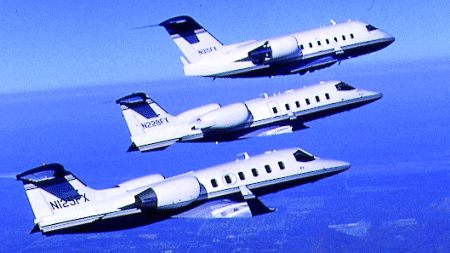Graham Warwick/WASHINGTON DC

Fractional ownership programmes should continue to operate under the regulations which govern general aviation, but with the increased safety oversight applied to commercial operators, says an industry committee formed by the US Federal Aviation Administration to provide guidance on the contentious issue.
The Fractional Ownership Aviation Rulemaking Committee, formed last October, has presented a draft notice of proposed rulemaking (NPRM) to the FAA for review. It has urged against any changes to the document that could endanger the "100% consensus" reached within the 27-member committee between fractional programme managers, on-demand charter operators, aircraft management companies and traditional corporate flight departments.
The committee recommends that fractional programmes continue to operate under the Part 91 rules that govern corporate flight departments, but are regulated by a new subpart which requires the same FAA safety oversight as charter companies operating under Part 135 rules.
At the same time, the draft NPRM proposes changes to Part 135 that would provide charter companies with some of the operating flexibility benefits enjoyed by the fractionals. Importantly, the proposals do not affect the regulation of other Part 91 operators.
The proposed new subpart K "codifies the best practices of the major fractionals", says committee chairman Jim Christiansen, chief operating officer of TAG Aviation USA - a large Part 135 operator and aircraft management company which has its own fractional ownership programme.
Christiansen says the committee decided fractional programmes did not need to be moved into Part 135 because of their excellent safety record under Part 91. To maintain safety as new companies enter the market, the proposed new subpart requires the issue of "management specifications" that set standards for such programmes.
Because of the safety record established by the fractionals, the committee proposes including some of their best practices in Part 135. This would allow on-demand operators to serve a larger number of smaller airports, "and open up charter to more communities", says Christiansen. It would also make charter operators more competitive with fractionals.
Proposed changes include allowing qualified on-demand operators - those meeting strict pilot training and pairing requirements - to use 85% or more of runway length when calculating take-off and landing distances, instead of the current 60% permitted by Part 135. This will allow use of smaller airports.
In a poll conducted last year by the US National Business Aviation Association (NBAA), corporate flight departments voted overwhelmingly for fractionals to be "surgically removed" from Part 91 and inserted into Part 135, without any other changes or new regulations in Part 91. NBAA president Jack Olcott says the draft NPRM "is the best articulation of what our members asked for. It is impossible to give them both".
Source: Flight International























